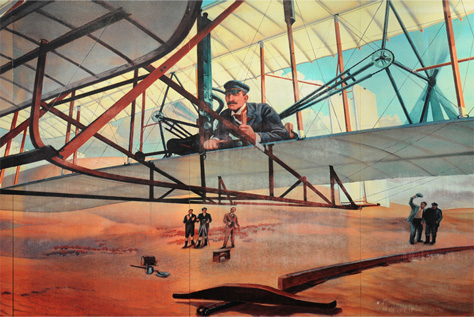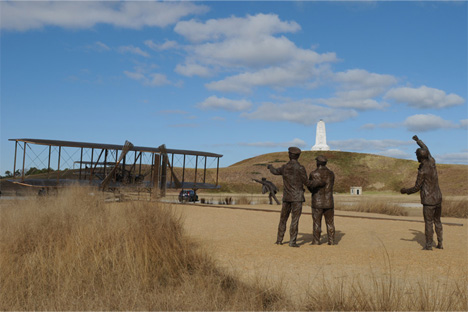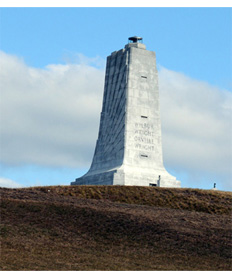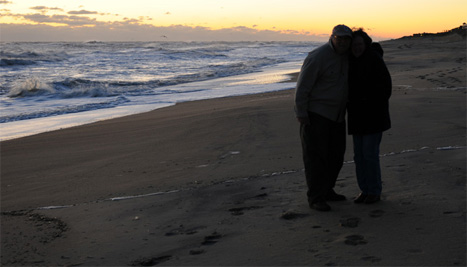Wright Brothers National Memorial |
||||||
|
|
||
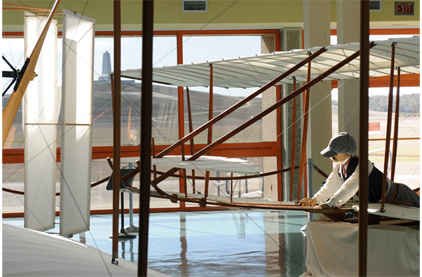
There is a nice visitor center and museum containing a replica of a Wright Flyer. A park ranger described a few problems solved by the Wright Brothers and their mechanic. A wind tunnel is on display used by the inventors to study effects of wind dynamics. They learned that lift charts in use at the time were in error so they created their own charts which are still in use today. The Wrights soon learned that propellers shaped like ship's propellers were not effective in air. Wood propellers are on display in the museum. They could not find an engine that had a required power-to-weight ratio so they built their own engine. An example of the Wright's home-made engine is on display. The Wright Flyer uses wing warping to control aircraft roll. The park ranger showed us how easy it was for the pilot to effectively change the shape of the wings by a lever. Wing warping isn't used in today's aircraft as their wings are somewhat inflexible. |
||
|
||
|
||
|
